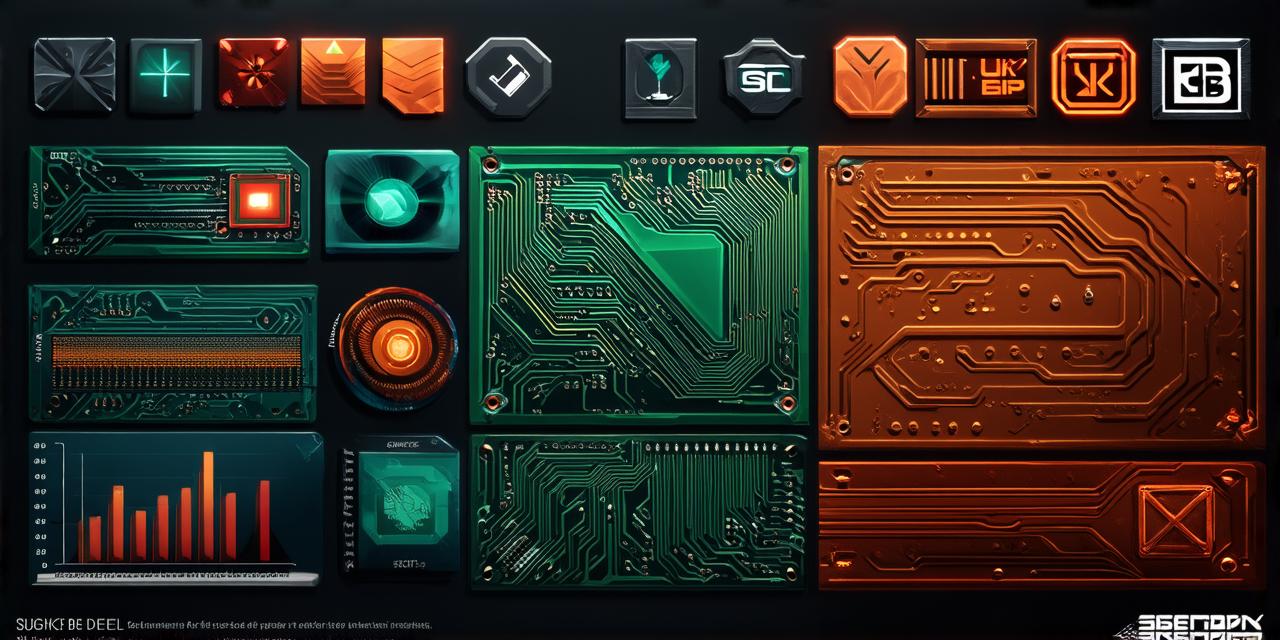Here’s the corrected HTML code for the article:
Unreal Engine 4 (UE4) vs Unreal Engine 5 (UE5)
The two most recent versions of Unreal Engine are UE4 and UE5. UE4 was released in 2014 and has since been updated several times, while UE5 was released in 2021 and is the latest version of the engine.
One of the main differences between UE4 and UE5 is the performance. UE5 is significantly faster and more efficient than UE4, thanks to improvements in both the rendering engine and the scripting language. This makes it ideal for high-performance applications, such as virtual reality (VR) and augmented reality (AR).
Another major difference between UE4 and UE5 is the support for real-time ray tracing. UE5 includes a built-in real-time ray tracing system that allows developers to create photorealistic graphics with minimal performance impact. This is a significant improvement over UE4, which required third-party plugins to achieve similar results.
UE5 also includes several new features and improvements over UE4, including better support for linear and HDRP displays, improved animation tools, and enhanced physics capabilities. These improvements make UE5 an excellent choice for developers who want the latest and greatest features in their engine.
However, it’s worth noting that UE4 still has a large community of developers who continue to use it for their projects, and there are many resources available online to help you get started with UE4. Additionally, if you have an existing project running on UE4, it may be more practical to stick with that version rather than switching to UE5, especially if the project is not performance-critical.
UE4 vs UE3
Unreal Engine 3 (UE3) was released in 2006 and is still widely used for game development today. While UE4 is the more recent version of the engine, UE3 remains a popular choice due to its stability and reliability.
One of the main advantages of UE3 over UE4 is its simplicity and ease of use. UE3 has a straightforward interface that is easy to navigate, even for developers who are new to game development. Additionally, UE3 has a large community of developers who have created many tools and plugins to help make development easier and more efficient.
UE4, on the other hand, offers many more features than UE3, including improved performance, better graphics capabilities, and enhanced physics simulations. This makes it an excellent choice for developers who want to create cutting-edge games and applications that push the boundaries of what is possible with a game engine.

However, as with UE4 vs UE5, if you have an existing project running on UE3, it may be more practical to stick with that version rather than switching to UE4. Additionally, if performance is not critical to your project, you may find UE3 to be a more suitable choice due to its simplicity and ease of use.
UE4 vs Unity
Another popular game engine is Unity, which was released in 2009. While both engines offer many similar features, there are some key differences between UE4 and Unity that you should consider before making a decision.
One of the main advantages of UE4 over Unity is its performance. UE4 is generally faster and more efficient than Unity, especially when it comes to high-performance applications such as VR and AR. This makes UE4 an excellent choice for developers who need the best possible performance for their project.
Another advantage of UE4 over Unity is its support for linear and HDRP displays. UE4 includes built-in support for these display technologies, which allows developers to create stunning graphics with minimal performance impact. This is a significant advantage over Unity, which requires third-party plugins to achieve similar results.
UE4 also offers better support for physics simulations than Unity, thanks to its powerful physics engine and advanced simulation capabilities. This makes it an excellent choice for developers who want to create realistic simulations in their games and applications.
However, Unity has several advantages over UE4, including a larger community of developers, more extensive documentation, and better support for mobile platforms. Additionally, Unity is generally easier to use than UE4, with a simpler interface and more intuitive development tools.
If you are new to game development or simply looking for a quick and easy-to-use engine, Unity may be the better choice for you. However, if performance is critical to your project, or you need advanced physics simulations and support for linear and HDRP displays, UE4 may be a more suitable choice.
Summary
When it comes to choosing an engine for your project, there are many options available, including Unreal Engine 4 (UE4), Unreal Engine 5 (UE5), Unreal Engine 3 (UE3), and Unity. Each of these engines has its own set of features and capabilities, and the best choice will depend on your specific needs and requirements.
If you need the best possible performance for your project, and want access to advanced graphics and physics capabilities, UE5 or UE4 may be the best choice for you. However, if you are new to game development or simply looking for a quick and easy-to-use engine, Unity may be the better choice for you.
Ultimately, the key is to carefully consider your needs and requirements before making a decision, and to choose the engine that will best help you achieve your goals.
